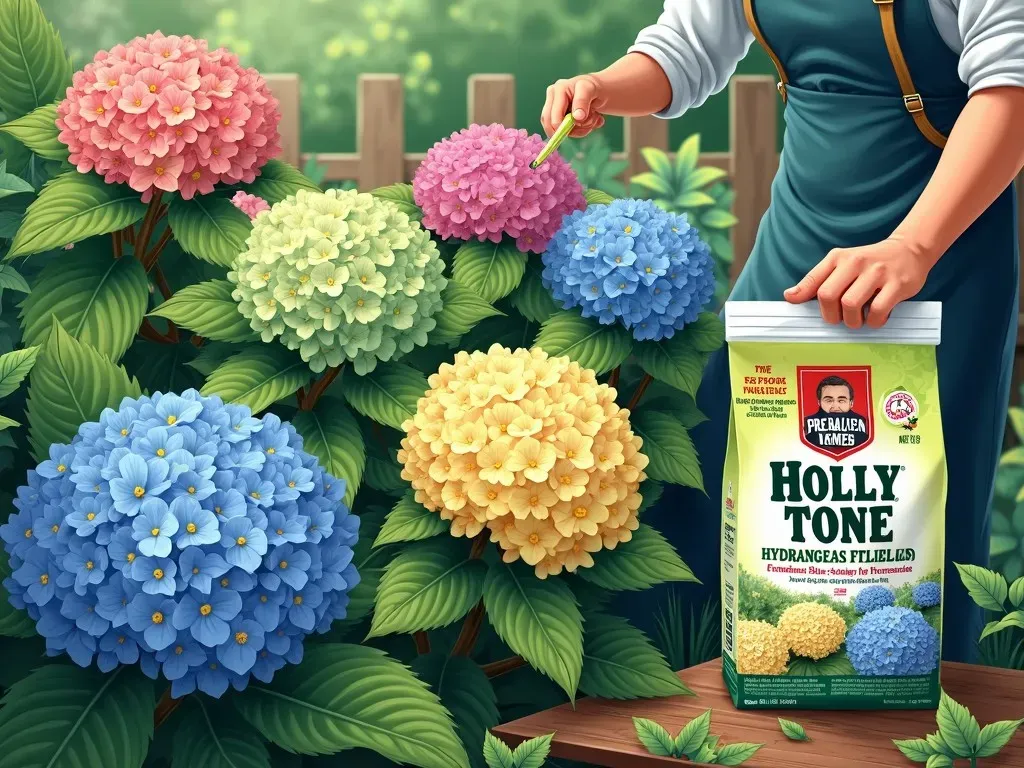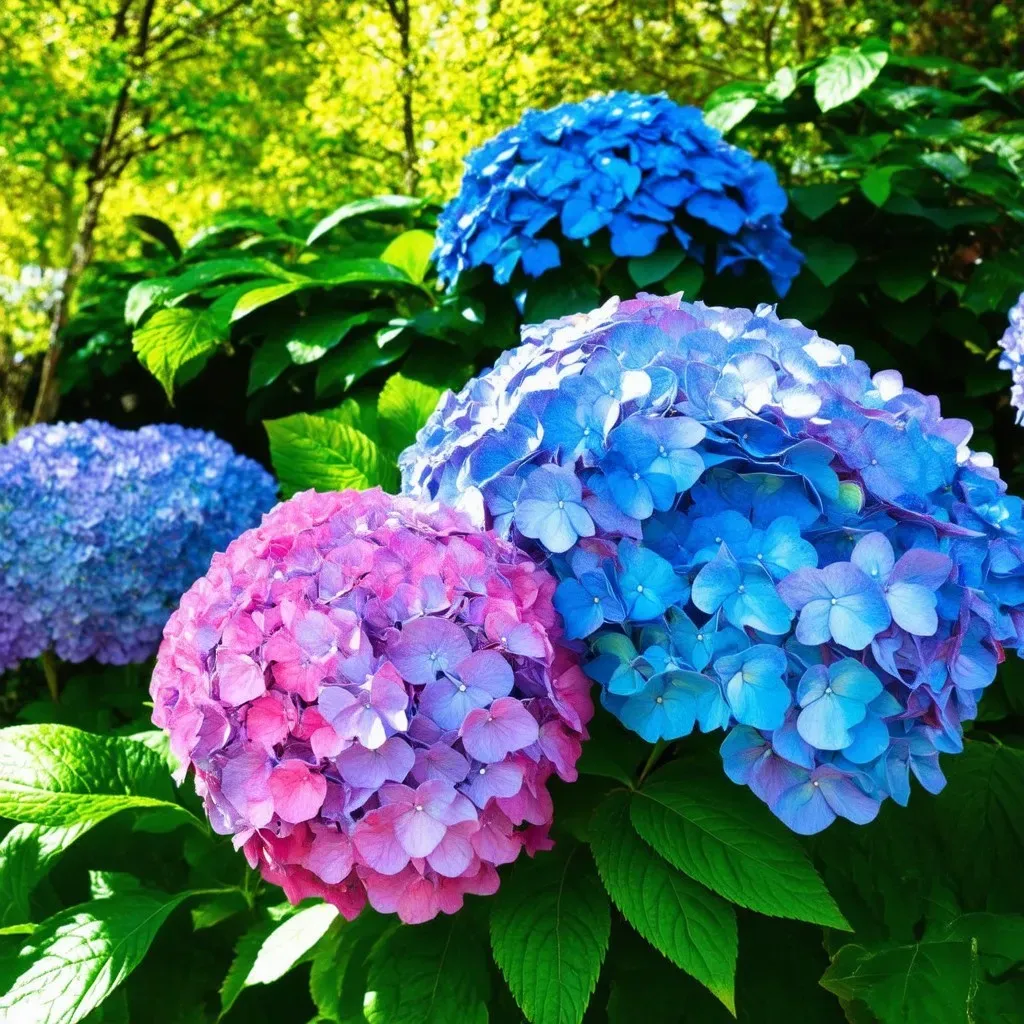Is Holly Tone good for hydrangeas? The simple answer is yes! Holly Tone, a specialized slow-release organic fertilizer, is formulated to enhance the acidity in the soil—an essential requirement for many hydrangea varieties, particularly those that produce stunning blue blooms.
When it comes to the well-being and vibrant growth of hydrangeas, selecting the right fertilizer is crucial. This article explores whether Holly Tone is suitable for hydrangeas, how and when to use it, and tips for achieving the best results.
What Is Holly Tone?
Holly Tone is a renowned organic fertilizer designed specifically for acid-loving plants. It contains a balanced blend of nutrients, including nitrogen, phosphorus, potassium, and essential micronutrients. The key benefits of Holly Tone are its ability to lower soil pH levels which can greatly influence the color and health of your hydrangeas.
Nutritional Content of Holly Tone
| Nutrient | Percentage |
|---|---|
| Nitrogen (N) | 4% |
| Phosphorus (P) | 3% |
| Potassium (K) | 4% |
| Calcium (Ca) | Variable |
| Other Micronutrients | Essential for plant health |
These balanced ratios promote healthy root development and flowering in hydrangeas.
Why Is Holly Tone Beneficial for Hydrangeas?
Holly Tone provides critical nutritional support for plants like hydrangeas, which thrive in acidic environments. The acidity not only helps plants absorb nutrients more efficiently but also influences flower color. For instance, in certain hydrangea varieties, lower pH levels can lead to vibrant blue blooms.
Advantages of Using Holly Tone on Hydrangeas
- Enhances Soil Acidity: Important for blue hydrangeas.
- Slow-Release Formula: Promotes consistent nutrient availability over time.
- Supports Beneficial Microbes: Helps in breaking down nutrients for better plant uptake.
- Organic Composition: Environmentally friendly compared to chemical fertilizers.

When to Use Holly Tone on Hydrangeas?
Timing is key when using Holly Tone for optimal results. Hydrangeas typically benefit from fertilization in early spring, just as new growth begins. Here’s a guideline for timing and application:
Fertilization Timeline
| Season | Action |
|---|---|
| Early Spring | Apply Holly Tone as new growth appears. |
| Mid-Summer | Optional additional feeding if necessary. |
| Fall | Avoid fertilization to allow plants to prepare for dormancy. |
When Not to Use Holly Tone
Avoid using Holly Tone in late fall or winter. Fertilizing during this time can encourage new growth that will be vulnerable to cold damage.
How to Apply Holly Tone to Hydrangeas
Application methods can significantly affect the effectiveness of Holly Tone. Below are steps to ensure proper application.
-
Determine the Appropriate Amount
Follow the packaging instructions for the recommended amount based on your hydrangea size and soil quality. -
Even Distribution
Scatter the granules evenly around the base of the plant, avoiding direct contact with the stems. -
Soil Incorporation
Lightly rake the fertilizer into the soil to promote absorption. -
Watering
After application, water the area well to activate the nutrients.
Factors to Consider When Using Holly Tone
Soil Testing
Before applying Holly Tone, test your soil pH. Ideal pH levels for most hydrangeas lie between 5.0 and 6.0. Adjust accordingly if your soil is radically different.
Safety and Effectiveness
- Organic Formula: Holly Tone is organic and safe for the environment.
- Release Rate: Slow-release formulas minimize the risk of over-fertilization, promoting steady growth.
Frequently Asked Questions
1. Can Holly Tone be used on all types of hydrangeas?
Yes, Holly Tone is suitable for most hydrangea variants, especially those that thrive in acidic soils like hydrangea macrophylla.
2. How often should I use Holly Tone on my hydrangeas?
Generally, once in early spring is sufficient. For weak or struggling plants, a second application can be considered in mid-summer.
3. Will Holly Tone change the color of my hydrangeas?
If your hydrangea is of a variety that changes color with pH level (like H. macrophylla), using Holly Tone can lower the pH, resulting in blue blooms.
4. What are the signs my hydrangeas need fertilization?
Look for stunted growth, yellowing leaves, or lack of blooms, indicating that your plants may benefit from additional nutrients.
Additional Tips for Hydrangea Care
- Mulching: Use organic mulch to help retain moisture and improve soil structure.
- Pruning: Regular pruning promotes healthy growth and might improve blooming.
- Watering Needs: Maintain consistent moisture, especially during dry spells.
Conclusion
Incorporating Holly Tone into your Hydrangea Care routine can reaffirm your plants’ health and enhance their beauty through improved blooming. With its carefully curated nutritional profile and organic composition, Holly Tone emerges as a leading choice for hydrangea enthusiasts. To explore more on fertilization techniques and gardening practices, visit Espoma.

By understanding how to effectively use Holly Tone for hydrangeas, gardeners can cultivate lush, beautiful plants that enhance any landscape. Whether you are a novice gardener or a seasoned pro, proper knowledge ensures vibrant blooms and thriving hydrangeas year after year.


